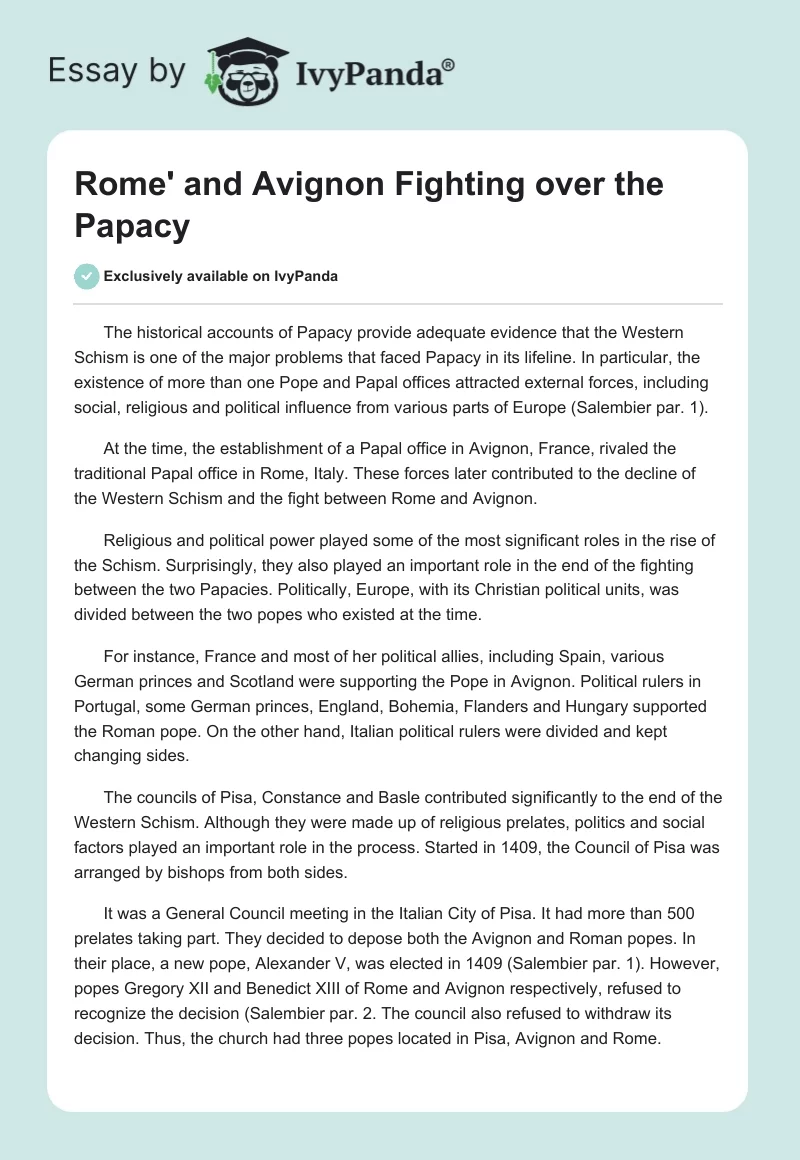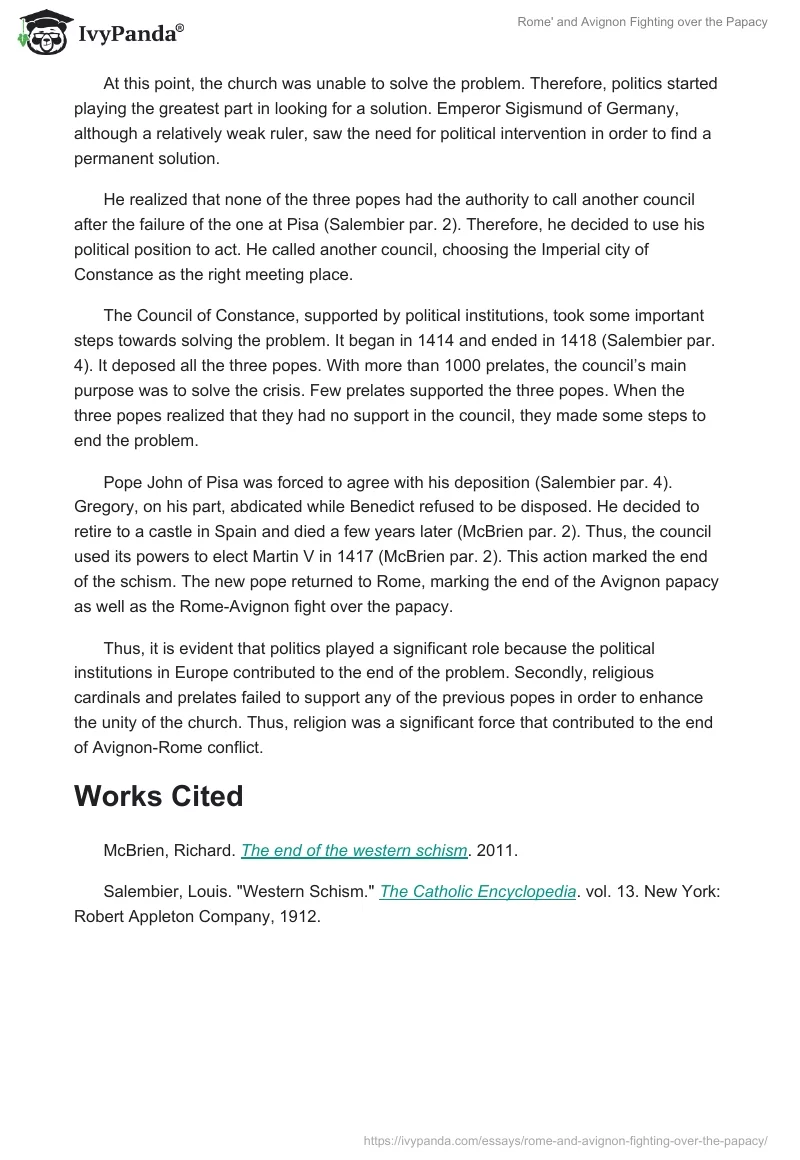The historical accounts of Papacy provide adequate evidence that the Western Schism is one of the major problems that faced Papacy in its lifeline. In particular, the existence of more than one Pope and Papal offices attracted external forces, including social, religious and political influence from various parts of Europe (Salembier par. 1).
At the time, the establishment of a Papal office in Avignon, France, rivaled the traditional Papal office in Rome, Italy. These forces later contributed to the decline of the Western Schism and the fight between Rome and Avignon.
Religious and political power played some of the most significant roles in the rise of the Schism. Surprisingly, they also played an important role in the end of the fighting between the two Papacies. Politically, Europe, with its Christian political units, was divided between the two popes who existed at the time.
For instance, France and most of her political allies, including Spain, various German princes and Scotland were supporting the Pope in Avignon. Political rulers in Portugal, some German princes, England, Bohemia, Flanders and Hungary supported the Roman pope. On the other hand, Italian political rulers were divided and kept changing sides.
The councils of Pisa, Constance and Basle contributed significantly to the end of the Western Schism. Although they were made up of religious prelates, politics and social factors played an important role in the process. Started in 1409, the Council of Pisa was arranged by bishops from both sides.
It was a General Council meeting in the Italian City of Pisa. It had more than 500 prelates taking part. They decided to depose both the Avignon and Roman popes. In their place, a new pope, Alexander V, was elected in 1409 (Salembier par. 1). However, popes Gregory XII and Benedict XIII of Rome and Avignon respectively, refused to recognize the decision (Salembier par. 2. The council also refused to withdraw its decision. Thus, the church had three popes located in Pisa, Avignon and Rome.
At this point, the church was unable to solve the problem. Therefore, politics started playing the greatest part in looking for a solution. Emperor Sigismund of Germany, although a relatively weak ruler, saw the need for political intervention in order to find a permanent solution.
He realized that none of the three popes had the authority to call another council after the failure of the one at Pisa (Salembier par. 2). Therefore, he decided to use his political position to act. He called another council, choosing the Imperial city of Constance as the right meeting place.
The Council of Constance, supported by political institutions, took some important steps towards solving the problem. It began in 1414 and ended in 1418 (Salembier par. 4). It deposed all the three popes. With more than 1000 prelates, the council’s main purpose was to solve the crisis. Few prelates supported the three popes. When the three popes realized that they had no support in the council, they made some steps to end the problem.
Pope John of Pisa was forced to agree with his deposition (Salembier par. 4). Gregory, on his part, abdicated while Benedict refused to be disposed. He decided to retire to a castle in Spain and died a few years later (McBrien par. 2). Thus, the council used its powers to elect Martin V in 1417 (McBrien par. 2). This action marked the end of the schism. The new pope returned to Rome, marking the end of the Avignon papacy as well as the Rome-Avignon fight over the papacy.
Thus, it is evident that politics played a significant role because the political institutions in Europe contributed to the end of the problem. Secondly, religious cardinals and prelates failed to support any of the previous popes in order to enhance the unity of the church. Thus, religion was a significant force that contributed to the end of Avignon-Rome conflict.
Works Cited
McBrien, Richard. The end of the western schism. 2011. Web.
Salembier, Louis. “Western Schism.” The Catholic Encyclopedia. vol. 13. New York: Robert Appleton Company, 1912. Web.


